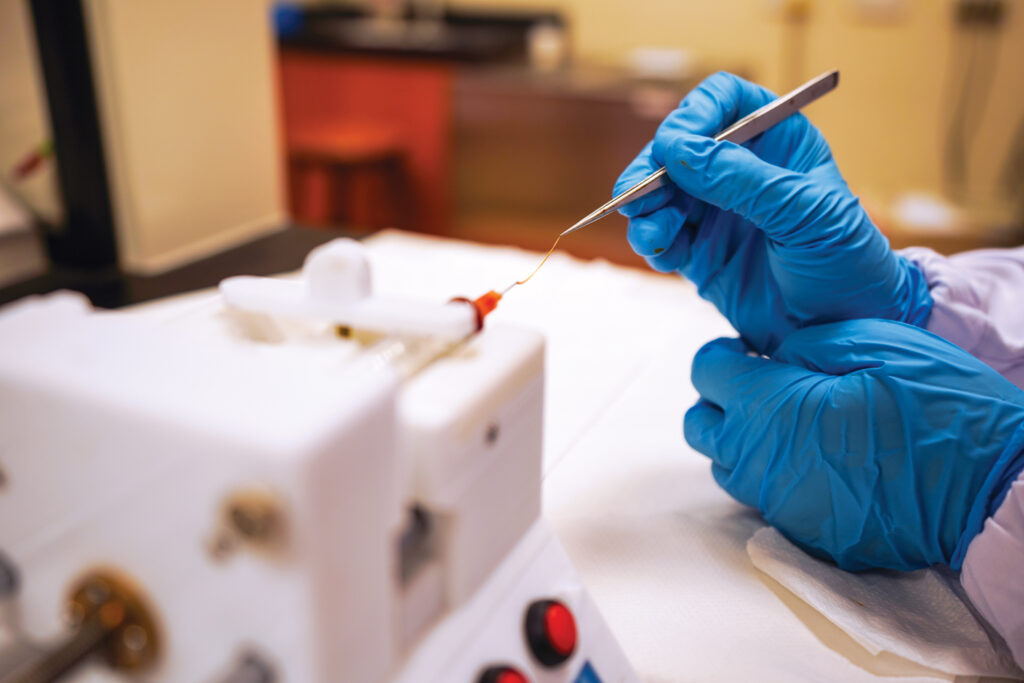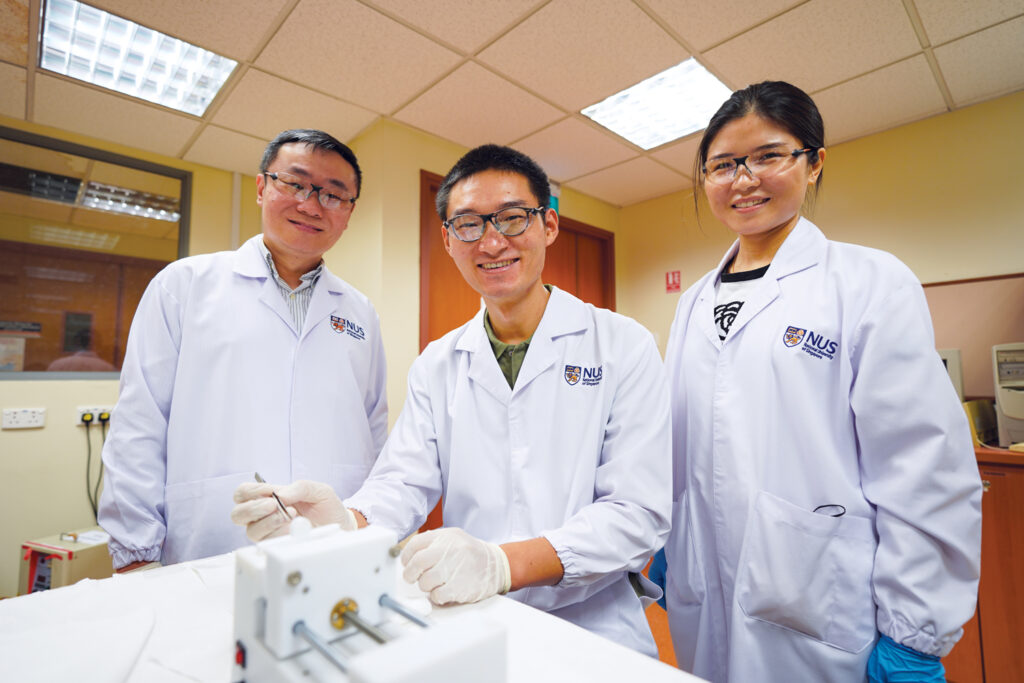
In their efforts to develop a method to create soft fibers that are stretchy, strong and electrically conductive and thus suitable for smart textiles, researchers at the National University of Singapore have drawn inspiration from the way spiders spin silk.
Spider silk comes from a protein solution, known as silk dope, that changes in concentration over its spinning process. The proteins also change their arrangement when the liquid portion is separated from the solid portion of the solution, the latter of which becomes the fiber. This happens at ambient temperature and pressure and was the process that the researchers wanted to emulate.

“Current methods [of making synthetic spider silk] typically require high temperatures, high volumes of solvents or complex systems,” the researchers explain in their paper, published in Nature Electronics in May. This new phase separation-enabled ambient spinning approach uses significantly less energy and solvents than conventional methods.
The researchers spun their fibers from a gel of polyacrylonitrile (PAN) and silver ions in a solvent. The gel forms a strand when pulled, spun and exposed to air. The fibers can be dissolved in the solvent and converted back into a gel to make new fibers.

Potential uses are wide-ranging. “These functional fibers can be incorporated into a strain-sensing glove for gaming purposes and a smart face mask to monitor breathing status for conditions such as obstructive sleep apnea,” among other uses, says assistant professor Swee Ching Tan.
Next steps for the research team are improving the fibers’ sustainability, from raw materials to the recycling of the final product.
 TEXTILES.ORG
TEXTILES.ORG


